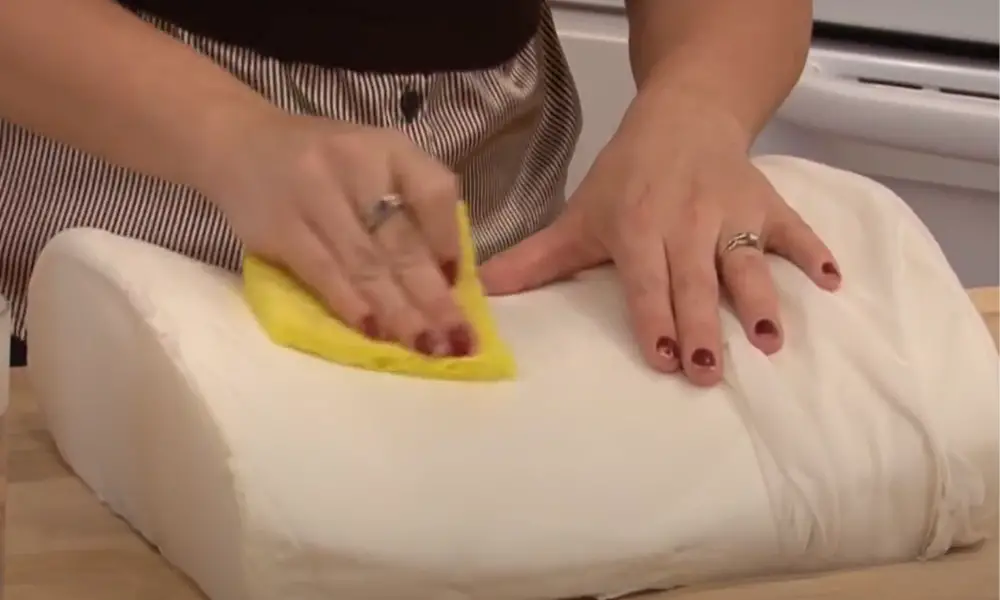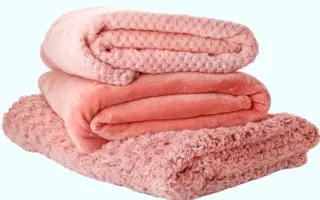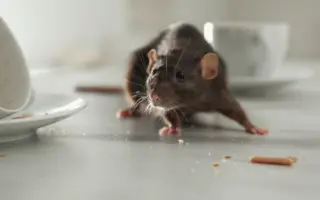Yes, you can wash memory foam pillows. Clean them carefully to avoid damage.
Spot cleaning and using mild detergent with water are recommended methods. Avoid submerging the entire pillow in water to prevent foam damage.
Use a clean cloth to blot and remove stains gently. Dry the pillow thoroughly before use to prevent mold growth. Regular maintenance, including using pillow covers and airing out the pillows, helps maintain freshness and cleanliness.
Table of Contents
Washing Memory Foam Pillows
Memory foam pillows are known for their comfort and support. But many people wonder, “Can you wash memory foam pillows?” The good news is, yes, you can wash them. But it’s essential to know how to clean without damaging them.
Is It Safe?
Washing memory foam pillows can be safe if done correctly. It’s important to follow specific guidelines to avoid damaging the foam. Here are some key points to consider:
- Avoid the Washing Machine: Memory foam is delicate and can break apart in a washing machine.
- Spot Cleaning: Use a mild detergent and water to clean small stains or spots.
- Hand Washing: For a more thorough clean, hand washing is recommended.
Follow these steps for hand washing:
- Fill a large basin with lukewarm water.
- Add a small amount of mild detergent.
- Submerge the pillow and gently squeeze, avoiding twisting or wringing.
- Rinse thoroughly to remove all soap.
- Press out excess water gently with towels.
- Air-dry the pillow, avoiding direct sunlight or heat sources.
Using these methods ensures your memory foam pillow stays clean without losing its shape or comfort.
Benefits Of Cleaning
Cleaning your memory foam pillow offers several benefits:
- Hygiene: Regular cleaning removes dust mites, bacteria, and allergens.
- Prolongs Lifespan: Keeping your pillow clean helps it last longer.
- Maintains Comfort: A clean pillow maintains its support and comfort over time.
Here’s a quick comparison table of dirty vs. clean memory foam pillows:
| Aspect | Dirty Pillow | Clean Pillow |
|---|---|---|
| Hygiene | Contains dust mites and bacteria | Free from allergens |
| Lifespan | Decreases over time | Lasts longer |
| Comfort | May lose support | Retains shape and support |
Incorporating regular cleaning into your routine ensures a healthier and more comfortable sleeping experience. It also keeps your pillow in top condition for many years.
Materials To Avoid
Using the wrong materials can ruin their structure and longevity. Knowing what to avoid ensures your pillow remains comfortable and supportive for years.
Harsh Chemicals
Using harsh chemicals on memory foam pillows can cause significant damage. These chemicals can break down the foam, making it less supportive and comfortable. Here are some common harsh chemicals to avoid:
- Bleach: Bleach is too strong for memory foam. It can cause discoloration and weaken the foam structure.
- Ammonia: Ammonia-based cleaners can degrade the foam, leading to a loss of support.
- Alcohol-based cleaners: These can dry out the foam, causing it to become brittle and break down.
Instead of harsh chemicals, use mild detergents. Here is a quick comparison:
| Harsh Chemicals | Mild Alternatives |
|---|---|
| Bleach | Mild Dish Soap |
| Ammonia | Baking Soda |
| Alcohol-based Cleaners | White Vinegar (diluted) |
Avoid using any cleaning agents that are not specifically labeled as safe for memory foam. Always read the labels and choose products designed for delicate materials.
Excess Water
Memory foam is like a sponge. It can absorb a lot of water, which is not good for its structure. Using too much water can cause several issues:
- Retained Moisture: Excess water can stay in the foam, leading to mold and mildew growth.
- Long Drying Times: Memory foam takes a long time to dry. This can cause unpleasant odors and a damp feeling.
- Structural Damage: Too much water can break down the foam, making it less effective.
To clean your memory foam pillow without using too much water, follow these steps:
- Spot clean with a damp cloth and mild detergent.
- Use a spray bottle to lightly mist the surface, rather than soaking it.
- Blot the area with a dry towel to remove excess moisture.
- Allow the pillow to air dry completely before using it again.
Using minimal water ensures your pillow stays in good shape. Always make sure the pillow is fully dry before putting it back in its cover or on your bed.
Cleaning Methods
Understanding the right cleaning methods ensures your pillow stays fresh and lasts longer. This section explores how to clean memory foam pillows without causing damage.
Spot Cleaning
Spot cleaning is the safest way to clean memory foam pillows. It helps remove stains and spills without soaking the entire pillow. Follow these steps for effective spot cleaning:
- Mix a mild detergent: Combine a small amount of mild detergent with lukewarm water.
- Blot the stain: Use a clean cloth or sponge to apply the detergent mixture. Gently blot the stained area without rubbing.
- Rinse the area: Dampen another cloth with clean water and blot the detergent residue.
- Dry thoroughly: Use a dry towel to remove excess moisture. Let the pillow air dry completely before use.
Spot cleaning is ideal for minor stains and keeps the memory foam intact. Avoid using harsh chemicals or excessive water, as they can damage the foam.
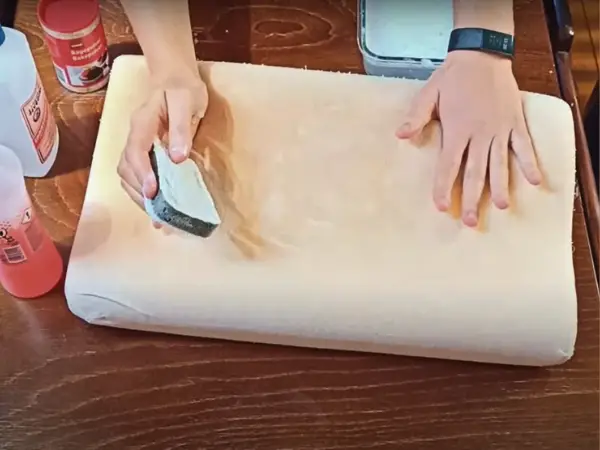
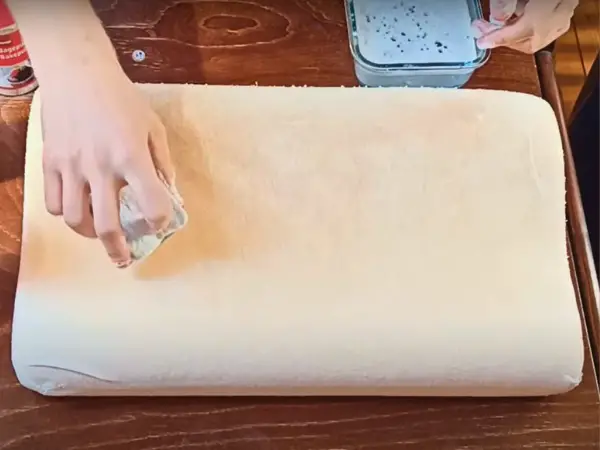
Machine Washing
Machine washing memory foam pillows can be risky. Most memory foam pillows are not designed for machine washing. The agitation and water can break down the foam. If the pillow’s care label allows machine washing, follow these guidelines:
- Use a gentle cycle: Select a gentle or delicate cycle on your washing machine.
- Cold water only: Use cold water to prevent the foam from breaking down.
- Minimal detergent: Add a small amount of mild detergent. Avoid fabric softeners.
- Protect the pillow: Place the pillow in a large laundry bag or pillowcase to minimize damage.
After washing, never wring out the pillow. Instead, press it gently between towels to remove excess water. Let it air dry completely, avoiding direct sunlight or heat sources.
Machine washing is generally not recommended. Spot cleaning or hand washing is safer and more effective for maintaining your memory foam pillow’s integrity.
Drying Techniques
Washing memory foam pillows is possible, but drying them requires special techniques to avoid damage. Let’s explore the best drying techniques to keep your memory foam pillow fresh and intact.
Air Drying
Air drying is the best way to dry memory foam pillows without causing harm. Avoid using a dryer as the heat can damage the foam. Here’s how to air dry your pillow properly:
- Remove excess water by pressing the pillow gently with a towel. Do not wring or twist.
- Place the pillow in a well-ventilated area. An outdoor clothesline works well if the weather is nice.
- Flip the pillow every few hours to ensure even drying.
- Use a fan to speed up the drying process. Place the fan near the pillow to circulate air.
- Check for dampness by feeling the pillow. Ensure it is completely dry before using it again.
Important Note: Memory foam can take up to 24 hours to dry completely. Be patient and ensure no moisture is left to prevent mold and mildew.
Avoiding Heat
Heat can damage memory foam, altering its structure and comfort. Here’s how to dry your memory foam pillow without using heat:
- Never use a dryer. The heat from the dryer can break down the foam, causing it to lose its shape.
- Avoid direct sunlight. While sunlight can help dry, too much heat can also damage the foam. Find a shaded, airy spot instead.
- Use a cool fan. Place the pillow in front of a fan set on a cool setting to help circulate air and speed up drying.
- Do not use heating appliances. Hairdryers or heaters should not be used as they can overheat and damage the memory foam.
Here’s a quick comparison of drying methods:
| Drying Method | Pros | Cons |
|---|---|---|
| Air Drying | Safe for foam, prevents damage | Takes longer |
| Using a Dryer | Faster | Risk of heat damage |
| Sunlight | Natural drying method | Potential heat damage |
Air drying in a cool, shaded area with a fan is the safest method. Patience is key to maintaining the quality of your memory foam pillow.
Deodorizing Tips
his blog post will guide you on how to clean your memory foam pillows without damaging them.
Baking Soda
Baking soda is a fantastic deodorizer. It’s safe and effective for memory foam pillows. Here’s how to use it:
- Step 1: Remove the pillowcase and any cover.
- Step 2: Sprinkle a generous amount of baking soda over the pillow.
- Step 3: Let it sit for at least 30 minutes. For stronger odors, leave it for a few hours.
- Step 4: Use a vacuum cleaner with an upholstery attachment to remove the baking soda.
This method helps in absorbing moisture and neutralizing odors. You can repeat this process every few months to keep your pillow fresh.
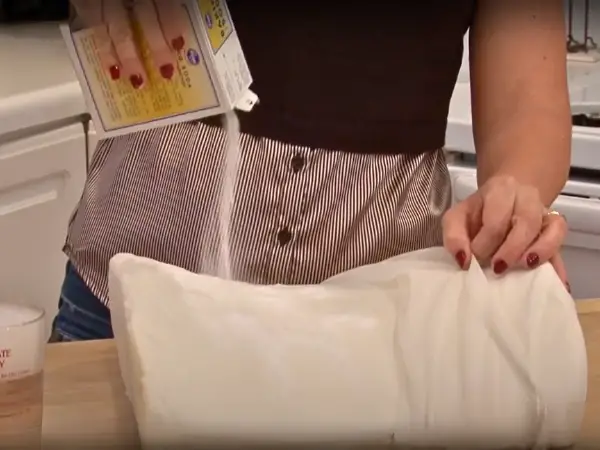
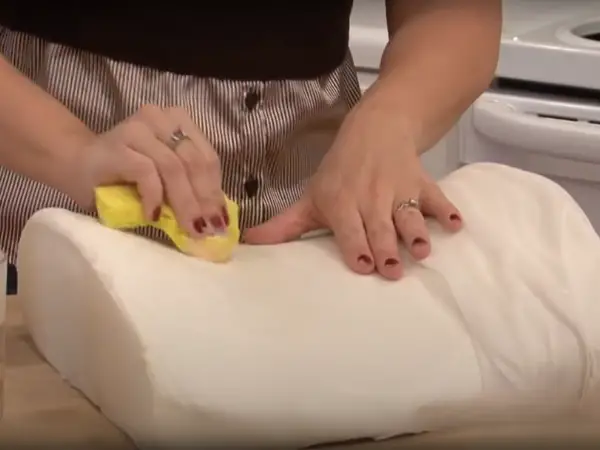
Essential Oils
Essential oils add a pleasant scent to your memory foam pillow. They are natural and have antibacterial properties. Here’s how to use them:
- Step 1: Mix a few drops of essential oil with water in a spray bottle. Lavender, eucalyptus, and tea tree oils work well.
- Step 2: Shake the bottle to mix the oil and water thoroughly.
- Step 3: Lightly mist the pillow with the mixture. Be careful not to soak it.
- Step 4: Let the pillow air dry completely before using it.
Using essential oils not only freshens up your pillow but also provides a calming effect. This method is perfect for those who love a touch of fragrance while they sleep.
Here’s a quick summary:
| Step | Description |
|---|---|
| 1 | Mix essential oil with water |
| 2 | Shake the bottle |
| 3 | Lightly mist the pillow |
| 4 | Air dry completely |
Both baking soda and essential oils are simple yet effective ways to keep your memory foam pillow smelling fresh and clean.
Stain Removal
One of the most common concerns is stain removal. Let’s explore how to effectively remove different types of stains from your memory foam pillow.
For Oil Stains
Oil stains can come from hair products, skin oils, or even food. Removing oil stains from a memory foam pillow requires a gentle approach. Follow these steps for best results:
- Blot the stain: Use a clean, dry cloth to blot up as much of the oil as possible.
- Apply baking soda: Sprinkle a generous amount of baking soda over the stain. Let it sit for 15 minutes to absorb the oil.
- Vacuum the area: Use a vacuum cleaner to remove the baking soda from the pillow.
- Mix a cleaning solution: Combine a small amount of mild detergent with water.
- Clean the stain: Dip a cloth in the soapy water and gently dab the stain. Avoid soaking the pillow.
- Rinse with clean water: Use a damp cloth to remove any soap residue.
- Dry thoroughly: Let the pillow air dry completely before using it again.
For Sweat Stains
Sweat stains can discolor your memory foam pillow over time. Here’s how to tackle them effectively:
- Prepare a cleaning solution: Mix equal parts white vinegar and water in a spray bottle.
- Spray the stain: Lightly spray the vinegar solution onto the sweat stain.
- Blot the stain: Use a clean cloth to blot the area, lifting away the stain.
- Apply baking soda: Sprinkle baking soda over the damp area to neutralize odors.
- Let it sit: Allow the baking soda to sit for 15 minutes.
- Vacuum the area: Remove the baking soda using a vacuum cleaner.
- Rinse with clean water: Use a damp cloth to wipe away any remaining residue.
- Dry thoroughly: Ensure the pillow is completely dry before using it again.
Maintaining Pillow Shape
Memory foam pillows are popular for their comfort and support. Washing these pillows can be tricky. The goal is to clean them without causing damage. A crucial aspect is maintaining the pillow’s shape. This ensures the pillow remains comfortable and supportive.
Fluffing
Fluffing your memory foam pillow helps maintain its shape. Regular fluffing keeps the pillow supportive. Here are some simple ways to fluff your pillow:
- Manual Fluffing: Hold the pillow on both ends. Push the ends together and pull apart several times. Repeat this for a few minutes.
- Shake It Out: Hold the pillow by one end. Shake it vigorously for a few minutes. Switch to the other end and shake again.
- Sunlight Exposure: Place the pillow in direct sunlight for a few hours. The heat helps fluff the foam and kill bacteria.
These methods are easy and effective. Regular fluffing extends the life of your pillow. It ensures the pillow remains comfortable and supportive.
Storage Tips
Proper storage is essential for maintaining the shape of your memory foam pillow. Follow these tips to keep your pillow in top condition:
- Store in a Cool, Dry Place: Avoid storing in damp or humid areas. Moisture can damage the foam and cause mold.
- Use a Pillowcase: A pillowcase protects your pillow from dust and dirt. Choose a breathable fabric like cotton.
- Avoid Heavy Items: Do not place heavy items on top of the pillow. The weight can deform the foam.
- Store Flat: Store the pillow flat to maintain its shape. Avoid folding or rolling it.
Using these storage tips keeps your pillow in good condition. Proper storage helps the pillow last longer. It also ensures the pillow remains clean and hygienic.
When To Replace
Knowing when to replace your memory foam pillow is essential for maintaining good sleep hygiene and overall health.
Signs Of Wear
Memory foam pillows show several signs when they need replacing. Look for these indicators to ensure your pillow is still providing the support you need:
- Loss of Shape: If your pillow no longer springs back to its original shape, it’s time for a new one.
- Visible Lumps or Bumps: Lumps indicate that the foam is breaking down.
- Persistent Odors: Strong smells that remain even after cleaning suggest the pillow has absorbed too much moisture or bacteria.
- Allergy Symptoms: Increased sneezing or itching can indicate dust mites or allergens in your pillow.
Always inspect your pillow regularly. This way, you can catch these signs early and replace it before it affects your sleep quality. Don’t wait until you start experiencing neck pain or discomfort. Keeping track of these wear signs ensures you enjoy restful nights.
Lifespan Expectations
Memory foam pillows usually last longer than other types of pillows. On average, they can last between 2 to 3 years. Here’s a general guideline for the lifespan of different pillow types:
| Pillow Type | Average Lifespan |
|---|---|
| Memory Foam | 2-3 years |
| Down/Feather | 1-2 years |
| Polyester | 6 months-1 year |
The longevity of a memory foam pillow depends on its quality and how well it’s maintained. High-quality memory foam pillows can last up to 3 years or more with proper care. Regular cleaning and using a pillow protector can extend its life.
Remember to replace your pillow when it shows signs of wear or when you’ve had it for over three years. Old pillows can harbor allergens and lose their support, affecting your sleep quality and health.
Frequently Asked Questions
Can I Wash Memory Foam Pillows In The Washing Machine?
No, you shouldn’t wash memory foam pillows in the washing machine. It can damage the foam. Instead, spot clean with mild detergent and air dry.
How Do You Wash Pillows In Washing Machine Without Ruining Them?
Use a gentle cycle with warm water. Add mild detergent. Balance the load with two pillows. Tumble dry on low heat. Fluff them periodically.
How Do You Clean A Smelly Memory Foam Pillow?
To clean a smelly memory foam pillow, sprinkle baking soda on it. Let it sit for a few hours. Vacuum thoroughly. Spot clean stains with mild detergent and water. Air dry completely.
How Do You Dry Memory Foam Pillows After Washing?
Gently squeeze excess water from the pillow. Lay it flat on a clean, dry towel. Air dry in a well-ventilated area. Avoid direct sunlight and heat sources. Flip occasionally for even drying.
